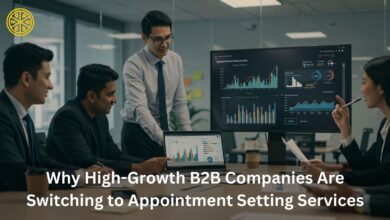Content is the Catalyst: A Strategic Approach to Improving rankings in Google

In today’s digital-first world, having a website isn’t enough. If your business, blog, or portfolio doesn’t appear on the first page of Google, you’re practically invisible to most users. According to a recent study, more than 75% of users never scroll past the first page of search results. So how do you climb up those competitive rankings? That’s where modern, data-driven SEO (Search Engine Optimization) strategies come in.
This guide will walk you through the most effective and up-to-date SEO practices for improving visibility, increasing traffic, and boosting your authority—all organically and sustainably.
Key Elements of Improving Rankings in Google
When we talk about improving rankings in Google, we’re talking about far more than keyword stuffing or backlink spamming. Google’s algorithms are now incredibly smart, analyzing everything from user experience and content quality to page speed and mobile responsiveness.
Here are the foundational pillars you need to focus on:
1. Understand Search Intent
Before you write a single line of content or tweak a meta tag, you must understand why users are searching. Are they looking to buy a product? Learn something new? Compare services?
There are four types of search intent:
- Informational: Seeking answers or explanations.
- Navigational: Looking for a specific site or page.
- Transactional: Ready to make a purchase or take action.
- Commercial Investigation: Comparing options before making a decision.
Align your content with the user’s intent. For example, a “how-to” blog post should deliver clear, actionable steps, while a product page should be optimized for conversions.
2. Write High-Value, Long-Form Content
Short content often doesn’t cut it anymore. Google tends to favor long-form, comprehensive posts that thoroughly cover a topic. Why? Because longer content is more likely to:
- Satisfy user intent
- Be shared and linked to
- Keep users engaged longer
When writing, go deep into subtopics. Use headings, bullet points, and examples to improve readability. Always aim to offer real value—don’t just repeat what’s already ranking. Original research, expert interviews, and case studies stand out.
3. On-Page Optimization Still Works
Even in 2025, on-page SEO remains critical. These are the elements directly on your site that help Google understand your content:
- Title Tags: Keep them under 60 characters and include your primary keyword.
- Meta Descriptions: Though not a ranking factor, they improve click-through rates.
- Headings (H1, H2, H3): Use them to structure your content and include keywords naturally.
- Image Alt Text: Helps with accessibility and SEO image search.
- URL Structure: Use clean, readable URLs like example.com/seo-guide/ instead of example.com/page?id=348.
Make sure your primary keyword appears naturally in the first 100 words and in at least one subheading.
4. Speed and Mobile Responsiveness Matter
Google uses mobile-first indexing, meaning it evaluates your mobile site before your desktop version. If your site isn’t mobile-friendly, your rankings will suffer.
Also, site speed is a confirmed ranking factor. You can test your website’s performance using tools like:
- Google PageSpeed Insights
- GTmetrix
- Lighthouse
To improve speed:
- Compress images
- Minimize CSS and JavaScript files
- Use a content delivery network (CDN)
- Enable browser caching
5. Internal Linking: Boost What Matters
Many site owners focus so much on external backlinks that they overlook the power of internal links. These links guide users—and search engines—to related pages on your website.
Use descriptive anchor text, and prioritize linking to high-converting or cornerstone pages. This not only helps with SEO but also keeps users on your site longer.
6. E-E-A-T: The Trust Factor
Google wants to rank content from credible, knowledgeable sources. This is part of its E-E-A-T criteria:
- Experience
- Expertise
- Authoritativeness
- Trustworthiness
Here’s how you build it:
- Display author bios with credentials
- Use HTTPS for security
- Get mentioned by reputable websites (through PR or guest posting)
- Collect positive user reviews
These trust signals can make a significant difference in how your content is ranked.
7. Backlinks: Focus on Quality, Not Quantity
Backlinks are like upvotes for your site’s credibility. But not all links are created equal. A single link from a respected domain in your industry is worth more than 100 spammy links.
Effective link-building tactics include:
- Guest blogging on relevant sites
- Earning press mentions through digital PR
- Creating link-worthy content (infographics, statistics, original research)
- Finding and replacing broken links on authority sites
Avoid paying for backlinks or using link farms—these violate Google’s policies and can lead to penalties.
8. Don’t Ignore Technical SEO
Technical SEO ensures that search engines can find, crawl, and index your pages properly. It includes:
- Sitemaps and robots.txt files
- Canonical tags to avoid duplicate content
- Schema markup to improve how your pages appear in SERPs
- Fixing crawl errors in Google Search Console
This is the hidden framework that keeps your SEO house standing.
9. Monitor, Analyze, and Adapt
SEO isn’t a one-time task—it’s an ongoing process. Use tools like:
- Google Search Console: Monitor performance, index status, and crawl errors.
- Google Analytics 4: Track user behavior and traffic sources.
- Ahrefs or SEMrush: Audit backlinks, keyword performance, and site health.
Make data-driven decisions. If a keyword isn’t performing, tweak your content or target a related long-tail variation. Constant analysis leads to better optimization.
Final Thoughts
Ranking on Google doesn’t happen overnight, but it does happen when you take the right steps consistently. From crafting insightful content to ensuring technical precision, every element plays a part in the bigger SEO puzzle.
Remember: Google’s mission is to deliver the most helpful, relevant content to users. If you focus on providing that experience better than your competitors, the rankings will follow.
So, whether you’re a beginner or looking to refine your strategy, implement these techniques and watch your visibility soar—one search result at a time.




